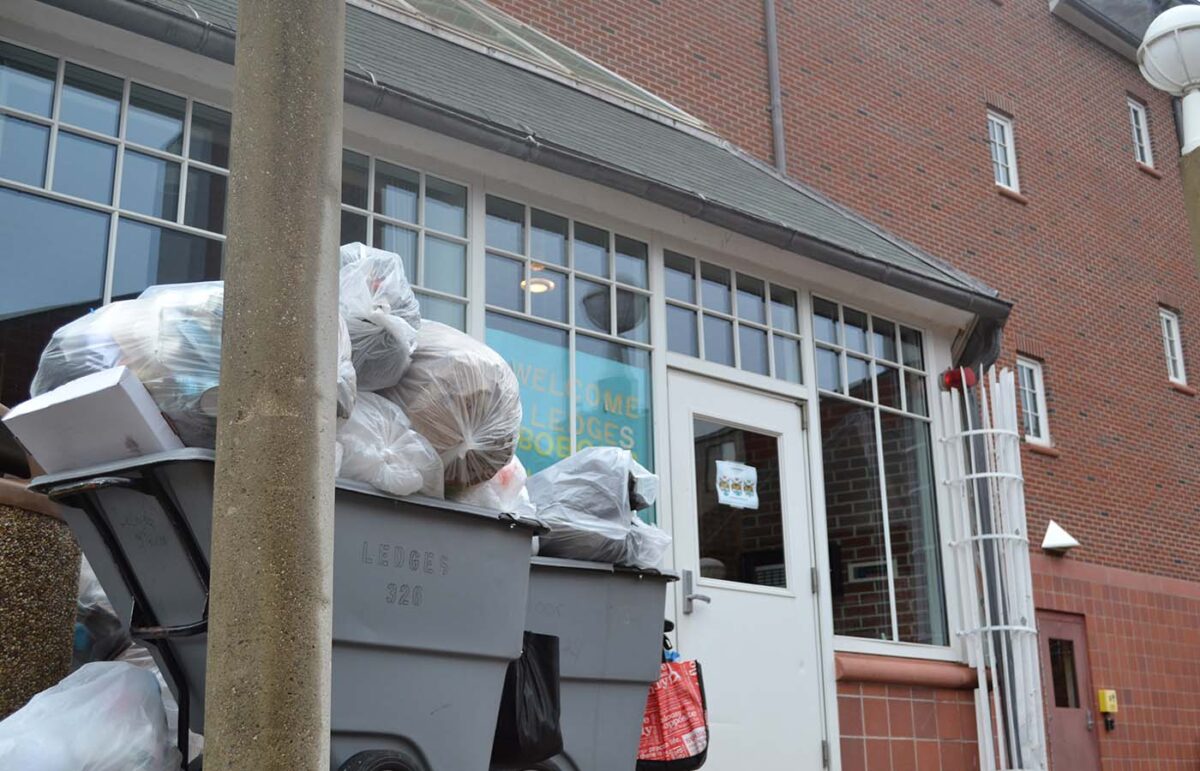Hamden is joining Connecticut’s pay as you throw (PAYT) program to encourage recycling and waste reduction, affecting all residents, including Quinnipiac students
PAYT is a system that has been administered by the state Department of Energy and Environmental Protection since 2003. It makes residents pay for how much waste they throw in the trash. The payment is designed to make people waste less and recycle more.
The first town in Connecticut to use PAYT was in Mansfield. Mansfield set up how much a person would pay per gallon of waste in a trash bag or garbage can. Thirty-five-gallon or 20-gallon bag can be picked up by the curb for $12.75. Residents leaving garbage at a drop-off station, would owe $2 per bag and $4.50 per can.

These costs have varied with each town in Connecticut. In Coventry, a resident pays $0.50-$1 per gallon. In Groton, a resident can pay $2.75-$5.50 per gallon. It is still unclear how much Hamden would pay when PAYT is put in place.
“I’d feel a little worried,” said Jacob Simon, a senior computer information systems major living on Whitney Avenue.“The landlord pays the garbage for us, but that might change because of this.”
Quinnipiac students living off-campus in Hamden are worried that they will have to start paying for waste like they do gas and electricity. The amount paid depends on how many garbage bags or trash cans are filled up.

“We see a lot of people have, like, so much trash outside of their bins when they put them out,” said Cassandra Harvey, a graduate student of public relations living on Whitney Avenue. “It’s understandable why they would wanna do that, but it’s probably another way for (Hamden) to make money.”
The PAYT program can also affect Quinnipiac, since the school and students create so much waste on a daily basis. Keith Woodward, the associate vice president for facilities operations, said it is too early to process the impact of the system on the Quinnipiac community.
“I feel like Quinnipiac will eat the cost,” Simon said. “This sounds like a stupid scam to make more money. This isn’t going to lessen pollution. I’ll still use the same amount of plastic bags.”
Though some think the system is made to take money from people, it actually makes people more mindful of what they buy and throw away. This leads people to rethink how they spend their money at the store and save money when they throw away less waste.
The deadline for towns to take part in the state system ends on Oct. 29. By this time, towns are required to finish what Woodward called “phase 1” of the application process.
Until then, Woodward said Quinnipiac will be keeping a close eye on the outcome and development made by the state for the PAYT system.


